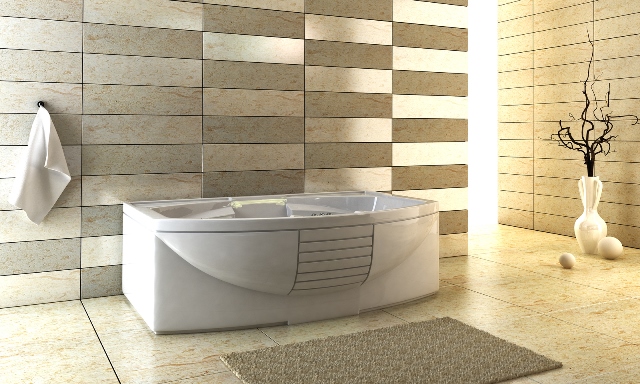Home Improvement: Removing Ceramic Tiles
When you’ve decided to give your bathroom an upgrade and are faced with removing ceramic tiles, how do you do it?
Looking to recover your floor with new tiling? You may have no room for adding another layer onto the old tiling, and you will have to scrape off the old tile. Removing ceramic tiles may not be an easy job, however, when you have the right equipment, supplies, and motivation, it is a job that any person can do for themselves.
Make sure you have a chisel, trowel, hammer, safety glasses, thin set mortar, kneepads, shop style vacuum, and a dust mask. It is also a good idea to get a 2-pound maul, or a heavy long handle hammer to drive wedges and stakes easily. The process can also be sped up by using an electric tile stripper or a jackhammer.
Don’t Forget Waste Containers When Removing Ceramic Tiles
Depending on the size of the flooring, you may need waste containers or any other means of disposing off the waste generated from this job. In this case, you need to prepare the house adequately for this project, since a lot of dust and dirt will be produced. Make sure that all carpeted areas and furniture are covered up before you begin. Otherwise, there is no need to cover them if you plan to replace them.
Don’t forget to keep adequate ventilation in the work area, keeping in mind that dust will spread all over the house. Since ceramic tiles have no subflooring or an underlayment that can be pried and thrown out, ceramic tile removal will require you to extract the tiles as well as the adhesives using the various tools. Consequently, this will undoubtedly take some work, energy, and time, with a small room requiring at least half a day to complete.
Start by using your hand maul and a ¾ or 1 inch masonry chisel on preferably targeting a broken tile or the tiles with an already loosened gravel. Then, move the chisel below the laid tiles, forcing them loose. For tiles that are difficult to remove, strike the face of the tile with a hammer in order to break them and remove them easily. This part of the job requires you to wear protective glasses since hammering the tiles will throw some sharp shard in all directions.
In most cases, older ceramic flooring has been laid using mastic adhesive. These will come off more easily than those laid using thin-set mortar. Nonetheless, if removing ceramic tiles proves difficult with the tools at hand, you may need to rent a jackhammer that has a chisel point. In addition, renting an electric tile stripper can reduce your work substantially especially for large rooms.
After all the tiling has been removed, you need to scrape off the adhesive off the concrete. It is okay to miss some spots and you can leave up to 1/8 inch thick layer of adhesive on the concrete. Use the flat side of a trowel (12 inch) to add another layer of latex mortar (1/8 inch) on the entire floor. This essentially fills out and levels out the remaining bits and voids. After removing ceramic tiles you can use the same thin-set mortar to install new tiling.












 Recent Blog Posts
Recent Blog Posts

